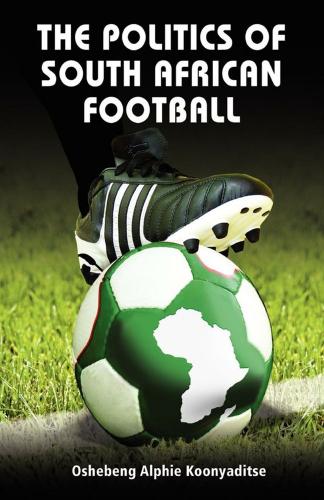Football in the country had always been run along racial lines. The former SAFA, now renamed the Football Association of South Africa (FASA), was the oldest football organisation in the country, having been founded in 1892. In response to the reality that FASA represented only one part of the society, namely whites, other racial groups founded their own associations. The South African Indian Football Association (SAIFA), founded in 1903, was set up for Indians; the South African Bantu Football Association (SABFA), founded in 1933, for blacks; and the South African Coloured Football Association (SACFA), founded in 1936, for mixed-race individuals.
Despite the existence of these racially categorised organisations, there were large numbers of people of all colours who were sickened by the racial divide in sport. In the 1950s, Andrew James Albertyn led the formation of the South African Soccer Federation (SASF), which brought together African, coloured and Indian soccer associations. In 1948 Albertyn went to Johannesburg to talk to African football associations about forming an alliance. Amongst those who liked the idea was Dan Twala, popularly known as “Dan Dan Orange,” because of his practice of rewarding players with oranges rather than money in times of scarcity. Twala, who had started the Moroka-Baloyi Cup competition in 1938, was instrumental in forming the Inter-Race Soccer Board, which regulated interracial friendly matches. A friendly match between associations was organised to coincide with the official formation of the South African Soccer Federation, on September 30, 1951.
In 1950, Albertyn was made secretary of the South African Soccer Federation, in recognition of his efforts to forge non-racial football. The aim was to bypass white football associations and join FIFA. However, shortly thereafter, Ramana Krishnaswamy Naidoo persuaded a number of black (African) football leaders to break away from the South African Soccer Federation and form the South African Soccer League. This was done on April 9, 1961.
Naidoo posed the question: if a few million whites can play professional soccer, why can’t 20 million blacks do the same? He saw breaking away as the only way out. In 1969 Naidoo secured an amount of four thousand rand from his employers, the Stellenbosch Farmers’ Winery, and together with SK Chetty, CM Pillay and H Lalla, he used the money to launch the Federation Professional League (FPL).
Their efforts did not stop there. Manickum Nadarajan Pather, together with Norman Middleton, Morgan Naidoo and Reg Feldman, succeeded in getting eight sports organisations – the South African Soccer Federation, the South African Amateur Swimming Federation, the South African Amateur Athletics and Cycling Board of Control, the South African Table Tennis Board, the South African Weight Lifting and Body Building Federation, the South African Lawn Tennis Union, the South African Women’s Hockey Board, and the South African Men’s Hockey Board – to form the South African Non-Racial Sports Organisation (SASPO). The initial meetings led to the formation in 1973 of the South African Council on Sport (SACOS), a non-racial umbrella organisation comprised by non-racial sports federations.
In 1955, George Singh led the South African Soccer Federation delegation to FIFA to lobby for the exclusion of South Africa from FIFA, until such time as football in the country became inclusive of all citizens. He argued that the Football Association of South Africa did not constitute a credible national association, because its regulations excluded the vast majority of the country’s footballers and denied them the right to represent their country.
FIFA, however, rejected Singh’s application, ostensibly because the South African Soccer Federation did not control football in South Africa. This persistent official stonewalling from all sides eventually resulted, in 1968, in the formation of the South African Non-Racial Olympic Committee (SAN-ROC), with Dennis Brutus elected as its first president.
In a major breakthrough, on March 28, 1980, Pather, as a SACOS founder member, addressed the United Nations Committee Against Apartheid. Amongst others, he had talks with Abraham Ordia (president of the Supreme Council for Sport in Africa), Dennis Brutus, Sam Ramsamy (chairman of the South African Non-Racial Olympic Committee) and Kader Asmal (chairman of the Irish Anti-Apartheid Movement), who would become Minister of Education (1999-2004) in the new South Africa. Even back then, there were white South Africans who felt more could and should be done to integrate sports. Of two polls taken in 1971, the first showed that 79 percent of the 925 white South Africans polled favoured sports integration, and the second that 94 percent of 292 white cricketers polled said they were prepared to play with or against blacks at league level.
Around the world, the frustration with South Africa’s racism had slowly been growing. On July 15, 1974, Newsweek (New York) reported that South Africans were “humiliated by the British team as a consequence of not being able to use black stars.” There was a measure of optimism among some who believed “progress” was being made in integrating sport in the country. On April 5, 1973, the Washington Post quoted the Finnish IOC member, Baron Erik von Frenckell, as saying that he believed it was only a matter of time before South Africa would be readmitted to the Olympic Games.
____________
16 R2 708 900 was spent on white sports and only R102 150 on black sport from 1965 to 1972.
As early as the late 1800s, there were football teams belonging to associations linked to the major cities, but the associations themselves only proliferated to incorporate smaller centres after 1920. At first these associations were area based, but then they became compartmentalised according to race.
Конец ознакомительного фрагмента.
Текст предоставлен ООО «ЛитРес».
Прочитайте эту книгу целиком, купив полную легальную версию на ЛитРес.
Безопасно оплатить книгу можно банковской картой Visa, MasterCard, Maestro, со счета мобильного телефона, с платежного терминала, в салоне МТС или Связной, через PayPal, WebMoney, Яндекс.Деньги, QIWI Кошелек, бонусными картами или другим удобным Вам способом.
